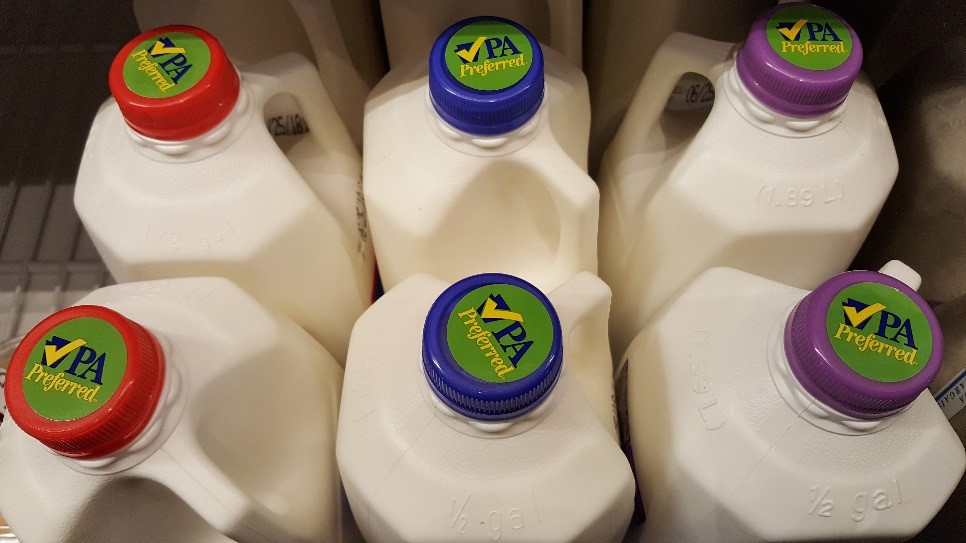Did you know that March is National Nutrition Month? The month-long celebration was first established more than 50 years ago by the Academy of Nutrition and Dietetics to remind everyone about how important informed food choices and healthy eating habits are to our overall health. This year’s theme is “Beyond the Table,” which is intended to connect more people to all the aspects of nutrition from farm to fork. The theme is also supposed to relate to all the ways we eat meals now, with a recent study by The Hartman Group showing that more than half of all dinners are eaten away from the dinner table.
As dairy farmers, we don’t always appreciate how fortunate we are that our products have such a prominent role in our nation’s nutritional guidelines. When the latest Dietary Guidelines for Americans were released in 2020, they reinforced the contributions that dairy makes to providing nutrient-dense food options with significant health benefits. The guidelines called toddlers and young children to get 2 – 2 ½ servings (or cups) of dairy every day, while pre-teens and teenagers were encouraged to consume 3 servings of dairy a day. The most recent guidelines also recommended that adults include three servings of dairy in their daily diet.
These recommendations still called for fat-free or low-fat choices for milk, cheese, and yogurt. However, mounting evidence is pointing to the benefits of healthy fats found in whole milk and fuller fat dairy products. More and more research is being done that shows how dairy consumption can be directly correlated to lower risks of high blood pressure, cardiovascular disease, and Type 2 diabetes. The positive correlation exists regardless of the fat level in the dairy products consumed. Other studies have shown that dairy fat can have a positive effect on lowering blood cholesterol levels.

Mounting Evidence
Much of this research has been submitted to the 2025 Dietary Guidelines Advisory Committee to review as part of their process in drafting the 2025 – 2030 Nutritional Guidelines. The committee was formalized in the summer of 2022 and began meeting three times a year in the beginning of 2023. The committee still has two meetings scheduled in 2024 to complete their scientific review, which is step 3 in the process of drafting the revised guidelines.
Once they have reviewed the scientific evidence, the committee will develop the dietary guidelines, which will be presented to both the USDA and the US Department of Health and Human Services (HHS) for implementation. Both agencies will then use these guidelines to shape public policy around our food systems and food programs, including the Supplemental Nutrition Assistance Program and the National School Lunch Program.
The good news is that there are a lot of opportunities for input into the process of developing the US Dietary Guidelines. Anyone who is interested can go to dietaryguidelines.gov/get-involved to listen to the virtual committee meetings, receive regular updates, and provide public comments on the process. Representatives from the National Dairy Council, Dairy Management Inc, and the International Dairy Foods Association have been among the many people who have testified on behalf of adding fuller fat dairy options back into the dietary guidelines. Third-party experts from the health community have also spoken on behalf of fuller fat dairy options.
Strong Support for Dairy
Many within and outside of the dairy industry are hopeful that the mounting research will push the committee to add fuller fat dairy options back into the mix when they release this next round of dietary guidelines. We won’t know for certain what the decision will be until the guidelines are released in early 2025. It is encouraging, though, to see the strong support from across the health and nutritional communities that dairy is getting in the process of developing the dietary guidelines. With so many advocates speaking on behalf of dairy, maybe it is time we all did a little more to share our story in our own communities.
National Nutrition Month is a great time to celebrate dairy’s role in providing high quality proteins and other nutrition in our diets. Few other products are as versatile and nutrient dense as dairy. With this year’s theme being “Beyond the Table,” consider ways you could help connect people in your community to where their dairy foods come from by hosting a farm tour, sharing a little bit about your farm and what you do on social media, providing a dairy product for a social event at church, or even just having a conversation in the dairy aisle at the local grocery store. Sometimes changing someone’s mindset about what you do and what you provide is as simple as engaging in that first conversation.
Editor’s Note: This column is written by Jayne Sebright, executive director for the Center for Dairy Excellence.

